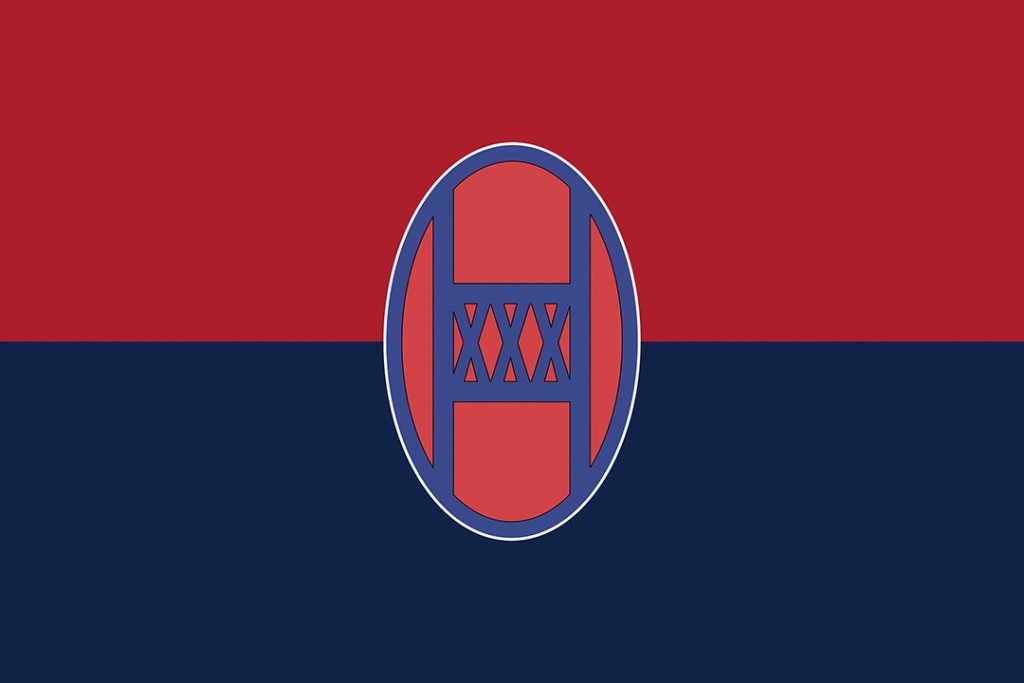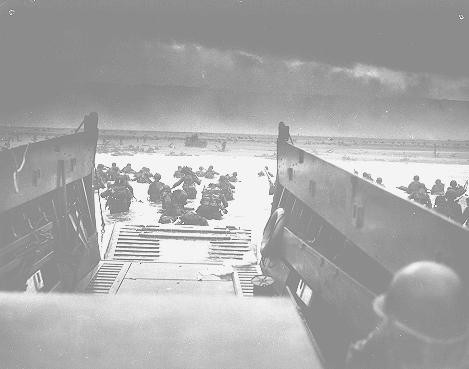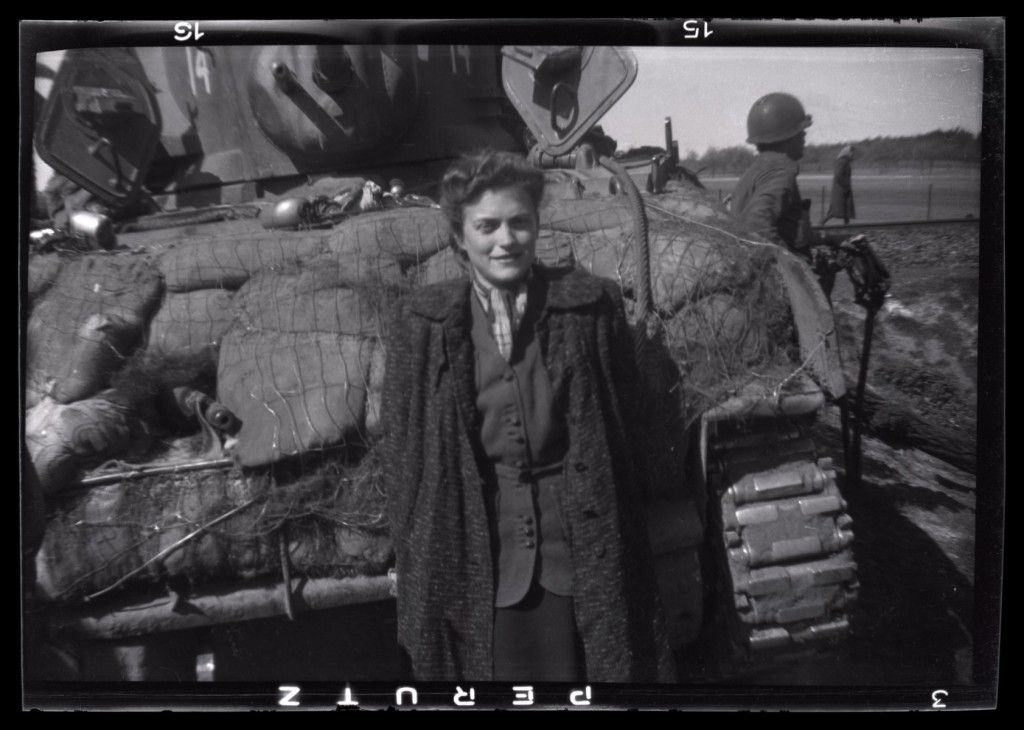
The 30th Infantry Division during World War II
In 1985, the United States Holocaust Memorial Museum and the US Army Center of Military History began a program to honor US Army divisions that took part in the Allied liberation of Nazi camps. The US Army Center of Military History defines a liberating division as one whose official records show its presence at a camp within 48 hours of the first soldier’s arrival. The 30th Infantry Division is among the 36 US divisions that have been recognized to date.
Key Facts
-
1
US, British, Soviet, and Canadian troops encountered concentration camps and other sites of Nazi crimes as they advanced across Europe in 1944 and 1945.
-
2
The Allied soldiers liberated sick and starving camp prisoners from Nazi tyranny. They also provided them with food, clothing, and medical aid.
-
3
The United States Holocaust Memorial Museum and the US Army Center of Military History have recognized 36 US divisions for their role in the liberation of Nazi camps.
30th Infantry Division During World War I
The 30th Infantry Division (nicknamed the “Old Hickory” division) formed in 1917, after the United States entered World War I. “Old Hickory” contained National Guard units from North Carolina, South Carolina and Tennessee. As part of the American Expeditionary Forces, it fought against the German army in France from July to November 1918. When World War I ended, the 30th Infantry Division was demobilized and the National Guard units returned to their states.
30th Infantry Division Campaigns During World War II

The United States military reactivated the 30th Infantry Division in September 1940. In 1944, the 30th Infantry Division was sent to Great Britain as part of the planned Allied landing on the European continent. Between June 7–18, 1944, units from the division landed on the Normandy beaches of France. This was just a few days after D-Day (June 6), the Allied invasion of western Europe. “Old Hickory” fought its way through northern France and into Belgium, and in early October, crossed the Siegfried Line into Germany. The division fought in the Battle of the Bulge beginning in December 1944 and helped drive back the German attack. In March 1945, the 30th Infantry Division crossed the Rhine River and captured Magdeburg on April 18th. When the war in Europe ended on May 8, 1945, the 30th Infantry Division had just linked up with the Soviet Red Army near Magdeburg, Germany.
The 30th Infantry Division and the Liberation of the Weferlingen Subcamp
As the 30th Infantry Division moved east into Germany, it liberated the Weferlingen subcamp on April 12, 1945. Weferlingen (code name “Gazelle”) was a subcamp of the Buchenwald concentration camp. There, US soldiers found 421 prisoners in dire need of medical attention. The inmates had been forced to construct tunnels for an underground armaments factory. Once this was completed, the prisoners had to build engines for the German war effort. Division representatives arranged for the mayors of the neighboring towns of Grasleben and Walbeck to immediately provide food for the starving inmates. Later, the 30th Infantry Division’s 105th Medical Battalion provided former prisoners with medical supplies to help them recover.
The 30th Encounters a Transport of Bergen-Belsen Prisoners
On April 13, 1945, members of the 30th encountered about 200 starving and ill Jewish concentration camp prisoners. The prisoners had escaped from a nearby transport. The American soldiers then sent two tanks to find the train with the remaining inmates. They located it near the German village of Farsleben. The unit's “after action” report indicated that:
There were 12 German military guards including the train commander who gave up without a fight when they saw our tanks. There 2500 pitable [sic], oppressed people from all over Europe, starved, beaten, ill, some dying, but all of whom were wildly happy and grateful to their “liberators.” The tank crews passed out what food and cigarettes they could to help the sufferers. These people, mostly Jewish political prisoners, had been until recently kept at a concentration camp near Hanover.

The prisoners encountered by the American soldiers on this transport were from the overcrowded and typhus-ridden Bergen-Belsen concentration camp. As British troops advanced into the area, the SS guards had loaded some 8,000 inmates onto three trains between April 6 to April 11, 1945. The SS planned to transport them to other Nazi camps still in German hands. Only one train made it to the Theresienstadt ghetto. US and Soviet troops liberated the other two.
When the 30th Infantry Division discovered the transport near Farsleben, most of the SS troops had fled into the countryside. To protect the prisoners from returning SS guards, the American soldiers stationed a tank and civilian patrols near the train. They also requisitioned food from nearby German farms and homes. The 30th Infantry Division then began efforts to find shelter for the former prisoners so that they “could be moved away from the filthy, jammed, evil-smelling railroad cars.”
Recognition as a Liberating Division
The 30th Infantry Division was recognized as a liberating unit by the US Army's Center of Military History and the United States Holocaust Memorial Museum in 2012.
30th Infantry Division Battle Casualty Figures
Hundreds of thousands of US servicemen and women died or were wounded in the fight against Nazi tyranny.
The total number of battle casualties for the 30th Infantry Division in the European Theater of Operations during World War II was 18,446. In this case, “battle casualties” includes all personnel who were unable to fight in battle because they were wounded, missing, captured, or killed.
Among the battle casualties suffered by the 30th Infantry Division, there were 3,547 deaths.
30th Infantry Division Nickname and Insignia
The 30th Infantry Division was nicknamed “Old Hickory” in honor of President Andrew Jackson (1767-1845). Jackson received this nickname from the men he commanded during the War of 1812. Jackson was known for his combination of resolve and readiness to endure the same grueling conditions that his men had to endure. The insignia or patch of the 30th Infantry is shaped like an oval. It shows the letters “O” and “H” (“Old Hickory”) with the Roman numeral “XXX” (for the division number) in purple stitching. This emblem is shown against a crimson background.

Footnotes
-
Footnote reference1.
After Action Report, April 1945, 743rd Tank Battalion.
-
Footnote reference2.
Matthew A. Rozell, A Train Near Magdeburg: A Teacher’s Journey into the Holocaust, (Hartford NY: Woodchuck Hollow Press, 2016).
-
Footnote reference3.
In the aftermath of World War II, the US Department of the Army compiled casualty figures for US Army personnel. The US government published these figures in 1953. The report listed casualty numbers for the US Army for the period from December 7, 1941 (Pearl Harbor) through December 31, 1946, when US President Harry S. Truman officially declared the end of war hostilities. Army Battle Casualties and Nonbattle Deaths: Final Report, 7 December 1941-31 December 1946, Prepared by the Statistical and Accounting Branch, Office of the Adjutant General, Under the Direction of the Program Review and Analysis, Division of the Comptroller of the Army, O.C.S., (Washington: Department of the Army, 1953), p. 3-4, 84-89.
Critical Thinking Questions
What challenges did Allied forces face when they encountered the camps and sites of other atrocities?
What challenges faced survivors of the Holocaust upon liberation?

